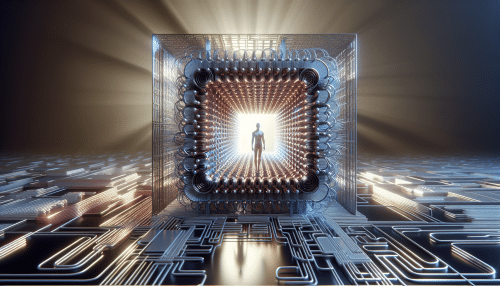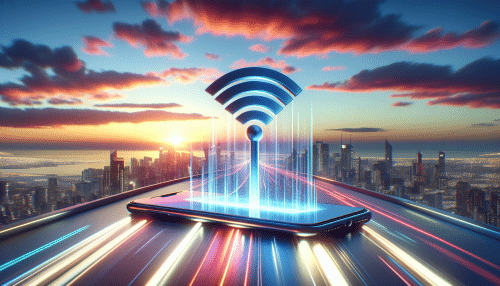You Won’t Believe What AI Can Do in Everyday Life
Brian Taylor November 20, 2025
Explore how artificial intelligence is quietly powering tools you use daily, boosting convenience, and guiding smarter decisions. This article breaks down surprising ways AI impacts your world—at home, at work, and even on your smartphone—while addressing questions about privacy, voice assistants, automation, and future tech trends.
AI Behind the Scenes of Everyday Gadgets
Most people interact with artificial intelligence every day, often without realizing it. Unlocking a phone with your face? That’s facial recognition, a form of AI that uses deep learning algorithms to identify unique points in a user’s image (Source: https://www.nist.gov/itl/iad/image-group/face-recognition). Music streaming services such as Spotify or Apple Music? Their recommendation systems expertly analyze your song history, finding patterns to suggest new tracks. Even email filters powered by AI manage the difference between what’s junk and what really matters. This integration of sophisticated machine learning has transformed once-static devices into tools that seem to intuitively adjust to your preferences.
Voice assistants have blurred the lines between gadgets and companions. Saying ‘Hey Google’ or ‘Alexa, what’s the weather?’ is now routine for millions. These assistants use natural language processing to break down your request and search across massive datasets, delivering instant answers or initiating actions such as dimming smart lights or sending texts. This technology quietly empowers daily routines, linking devices in smart homes and simplifying tech for users of all ages.
AI’s behind-the-scenes role extends to customer service chatbots and even some traffic prediction apps. Travel times on navigation platforms rely on machine learning to estimate traffic flow based on current and historic data. This application reduces commute stress and optimizes trip planning. Regular exposure to these evolving forms of artificial intelligence highlights just how integrated digital intelligence has become in society’s everyday toolkit.
Personalization and the Power of AI Algorithms
Personalization sits at the heart of today’s digital experience. Online retailers harness sophisticated AI algorithms to predict customer needs and present products users are likely to buy, using large-scale behavioral data analysis. This personalization is not limited to shopping; it guides everything from social media feeds to video streaming suggestions, ensuring the content feels tailored to every individual. The more you browse or watch, the better AI gets at anticipating your next interest.
AI-powered personalization boosts both convenience and engagement. For instance, streaming platforms like Netflix and YouTube deploy machine learning to catalog millions of data points—such as viewing times, genres, and likes—to build accurate profiles. These profiles inform the recommendations you see, creating a seamless user experience. Personalized health and fitness apps now adapt workout routines and wellness plans based on data collected from wearable sensors, transforming how people achieve and maintain personal goals.
Digital advertising showcases personalization’s impact. AI systems optimize ad placement by analyzing not only user behavior but also device type and time of day. As a result, online ads are more relevant, increasing the odds that users find them useful. The tailored experience is subtle but powerful, helping people navigate choice over an ever-expanding digital landscape with ease.
AI and Smart Homes: Convenience at Your Command
Smart homes have moved beyond novelty, largely thanks to AI-driven devices. Smart thermostats like Nest use machine learning to study your temperature preferences and daily patterns, making adjustments for both comfort and energy savings. These thermostats learn when to heat or cool your home more efficiently than manual programming ever could. With AI-integrated security systems, cameras can distinguish between people, pets, and potential intruders, sending intelligent alerts to homeowners only when real action is needed.
Voice-activated assistants serve as central hubs for the connected home. Using AI-driven voice recognition, they can answer queries, control appliances, and manage smart lighting systems on command. This interconnectivity helps those with mobility issues enjoy a higher level of independence. Meanwhile, robotic vacuum cleaners map out floorplans with sensors and AI, optimizing routes to ensure no area is missed, reducing repetitive chores, and freeing up time for more meaningful activities.
Energy management is smarter, too. AI-connected systems gather data on appliance usage and electricity rates to suggest cost-saving measures automatically. This not only maximizes convenience but also supports broader sustainability goals by reducing unnecessary energy consumption. Many people find the growing ecosystem of AI-powered home gadgets both practical and empowering.
AI and Mobile Devices: The Pocket Revolution
Smartphones have evolved into powerful, AI-equipped machines. Features like predictive text, voice dictation, and image enhancement filters use neural networks to understand, anticipate, and improve user actions. Camera apps leverage AI for automatic scene detection, photo stabilization, and low-light correction, making photography accessible and impressive regardless of skill level. Health monitoring apps go further, analyzing movement and vital signs to help users stay informed and proactive about their well-being.
Real-time translation apps are another example, allowing eager travelers or global communicators to bridge language gaps instantly. These applications use deep learning to understand the structure of sentences and context, providing more accurate and natural-sounding translations. AI-powered security features now protect personal data by monitoring for suspicious activity and suggesting optimal ways to secure devices—playing a central role in digital security on the go.
The rise of AI chatbot apps is changing how people access both information and support. Whether for mental health, scheduling, or research, virtual assistants stand ready at all hours. Their ability to learn user preferences and adjust responses creates a sense of unique service, contributing to the perception of the smartphone as not just a device, but an intelligent partner in one’s daily life.
Privacy Implications and Responsible AI Use
While technological advances are exciting, they come with questions about safety and privacy. AI’s reliance on data raises concerns over how personal information is collected, stored, and used. Leading organizations emphasize putting responsible AI principles into practice: transparency, accountability, and fairness. Public agencies and technology coalitions continue to develop standards to protect civil rights as AI in consumer technologies grows (Source: https://www.nist.gov/artificial-intelligence/ai-risk-management-framework).
Many device manufacturers and app developers now prioritize giving people control over the information their devices capture. Options to limit data tracking or customize privacy settings are becoming standard. AI’s design should always include safeguards to prevent bias, ensure equitable outcomes, and minimize misuse. Consumer empowerment and robust governance frameworks go hand in hand to maintain trust in intelligent technology.
Ethical development remains an evolving field. Researchers encourage open dialogue about how algorithms are trained and how decisions are made, so communities stay informed and resourceful. As home devices, cloud platforms, and mobile technology grow more complex, empowering users to make informed decisions about their digital lives becomes critical for responsible AI use. This trust underpins continued innovation and adoption in everyday settings.
The Future of Everyday AI and Emerging Trends
Experts predict that AI will further transform everyday experiences. Advances in edge computing mean AI can operate locally on devices, reducing reliance on large cloud networks and giving users more direct control over their data. Innovations like generative AI—capable of crafting text, music, or artwork—will play larger roles in work and entertainment. Machine learning will also help detect health issues quicker and more accurately through wearable tech.
Augmented and virtual reality are moving from niche platforms into regular consumer life, with AI-driven personalization making these experiences more immersive. Autonomous vehicles are also on the horizon, enabled by AI systems analyzing immense volumes of environmental and historical data. With these changes, the line between the digital and physical world continues to blur, allowing more personalized, interactive, and adaptive technologies in daily routines (Source: https://www.nasa.gov/aixspace).
Continued progress depends on education and workforce readiness around AI. Leading tech companies, as well as nonprofit organizations, increasingly offer free courses and digital skills bootcamps for learners of all ages (Source: https://grow.google/certificates/ai/). This democratization of knowledge prepares society for the next wave of transformation, ensuring that people benefit fully from responsible and creative AI innovation.
References
1. National Institute of Standards and Technology. (2023). Face Recognition. Retrieved from https://www.nist.gov/itl/iad/image-group/face-recognition
2. Netflix Technology Blog. (2023). Recommendations System Overview. Retrieved from https://netflixtechblog.com/recommender-system-overview-6c76a56e39f9
3. U.S. Department of Energy. (2022). Artificial Intelligence Powers Smart Homes. Retrieved from https://www.energy.gov/eere/buildings/articles/how-artificial-intelligence-changing-smart-homes
4. National Institute of Standards and Technology. (2023). AI Risk Management Framework. Retrieved from https://www.nist.gov/artificial-intelligence/ai-risk-management-framework
5. Grow with Google. (2023). Generative AI Certificate. Retrieved from https://grow.google/certificates/ai/
6. NASA. (2023). Artificial Intelligence x Space. Retrieved from https://www.nasa.gov/aixspace





